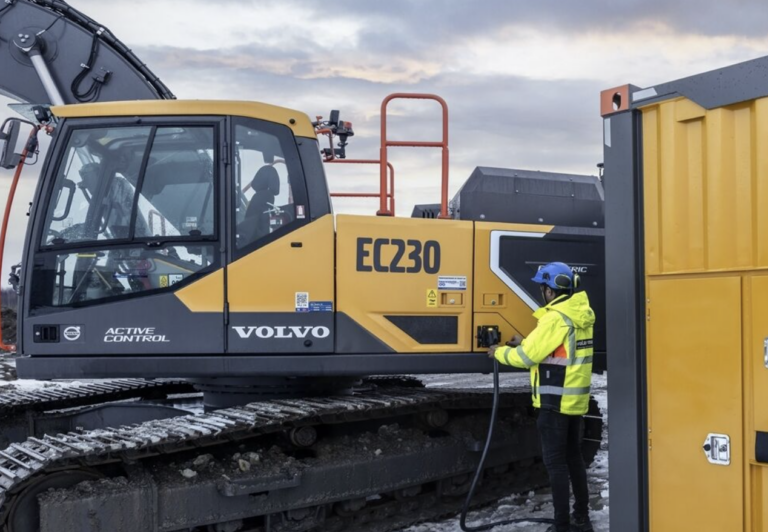Growth in North America and stable sales in Europe have ensured steady earnings for Volvo CE in Q3, 2023, with signs of a softening towards the end of the quarter. Service solutions are growing in profitability, with a rise in sales compared to the same period last year – demonstrating their increased significance and Volvo CE’s continued focus on digitalization.
In Q3, overall net sales amounted to SEK 24,296 M, a modest increase from SEK 24,238 M in the same quarter last year. When adjusted for currency movements net sales decreased slightly by 4%, of which net sales of machines decreased by 5% while service sales increased by 4%. Adjusted operating income amounted to SEK 3,733 M (SEK 3,773 M in 2022) corresponding to an adjusted operating margin of 15.4%.
This third quarter saw the unveiling of the company’s first electric power unit for larger electric machines like the EC230 Electric excavator. Allowing for high power charging of electric machines in remote locations, where access to a stable grid connection is limited, the Power Unit is now working with a customer in Sweden. Volvo CE also expanded the availability of the EC230 Electric excavator to customers in additional key markets in Europe.
Meanwhile in North America, the company inaugurated a new innovation center to provide training for technicians in diesel and electric heavy equipment, machine control technology, connectivity and productivity services.
Melker Jernberg, Head of Volvo CE, says: “We have performed well this quarter during a challenging economic environment while continuing to drive the long term transformation towards more efficient and sustainable construction solutions. Maintaining this solid performance is essential to help us also lead the way with our industry’s transformation.”
Ensuring stable earnings this quarter, the North American market grew by 10% in the year to date, supported by continued large infrastructure projects and strong commercial construction that offsets a weaker residential sector. While in Europe, the market slowed slightly, due to a weakening macroeconomic outlook and increasing interest rates, but still maintained a modest 4% growth.
The market in South America declined by 25% on the back of low investment levels in Brazil and low business confidence among customers. Meanwhile the Chinese market demand weakened substantially compared to last year with a drop of 40%, caused largely by a decrease in real estate investments.
In other Asian markets, there has been an increase in demand in India, Japan and the Middle East, offset by a lower market in South Korea and Indonesia, resulting in a steady development rate of 3%.





